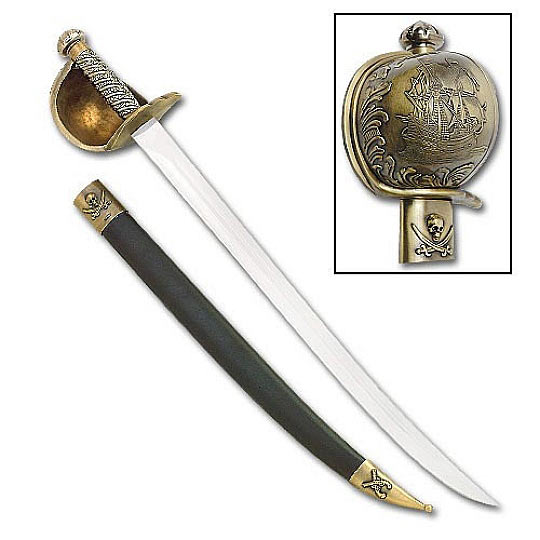I’ve touched on the importance
of the gold that Spanish conquistadores brought back from the new world – but today
let’s look more directly at how this influx of money created the very circumstances
that drive sailors to a life of outlaws.
I’ll center on England,
since so many pirates were of English decent.
The discovery of the New World
and the looting of its riches coincides very closely with the beginning of the
English Renaissance. I don’t believe this is an accident.
During the Middle Ages, wealth
was measured not in cash, but in land and in people. Land meant resources, and
people was a rough count of how many soldiers a leader could bring to war. A
leader who could bring a large army – even of semi-trained peasants, had more
authority than someone who have fewer troops. And to bring the ultimate
fighting force – trained archer, or trained knights, resources had to be great
enough that people had time to practice skills.
Generations of young men
of the “yeomanry” had spent their free time practicing the arts of war the way
modern teenagers practice video games or skateboarding, with similarly
impressive results.
But when Spain brought
large amounts of gold into the European economy, things changed. Trade became
ever more important, and the production of “cash crops” took on a sudden new
importance.
Medieval villages were
run much like families. The local ruler – perhaps a knight or baron, was at the
head. Under him were the village family units – rather like the patriarch of a
wealthy family rules over younger generations.
Under this system, no one
was “unemployed.” Everyone had some work to do, and while some occupations
brought better rewards than others, everyone who was a member of the group had
a “living.” That is to say, some kind of a home, food comparable with their
position, and small luxuries – new clothes, furniture, a well-made fireplace,
that could be obtained by trading with the neighbors.
People worked, not for “wages”
as we do today, but literally “for a living” – for food and shelter and
clothing and society.
Even highly skilled
individuals – portrait painters, for instance, didn’t make money for their
work. Instead, they were taken in by “patrons” who gave them a living in
exchange for their skills.
But, when Spanish gold
came on the scene things changed. Money – and increasing trade – meant that, for
the first time, the leaders of these sort of villages or holdings, could live
VASTLY better than the people who actually did the work.
In the old system, the
lord had a castle – but it was drafty, dark, and no cleaner that then huts of
his villagers. He had the best of the local wool and weavers, and first dibs on
the food and firewood. But the food he ate and the clothing he wore and the entertainment
he had was only the best of the local production.
With money on the scene, land-holders
could SELL the products of the workers, and buy luxury items. And, as a desire
for these item drove trade, More luxury items were made and brought in through
trade.
So, before, a good (locally
produced) wool tunic was the mark of a lord. With money, the same man needed
velvet or silk to show his position.
England’s great export
was wool. Sheep had been raised and sheared since the beginning of civilization
on the British Isles. The climate made
for superior wool quality, and weavers, creating cloth designed to keep out the
cold and damp, produced a superior product.
Until this time,
production was local. Farmers raised the sheep, gathered the wool, and a local
weaver made the cloth. Now, wool could be sold.
What this meant was that
the lord no longer needed people. He needed products. A more stable government meant
that nobles were less likely to be called on to provide troops, and eventually
keeping private troops even became illegal. The farmers who had sustained the
noble class for years (in return for protection from bandits and other nobles)
became a liability.
Landholders began to “enclose”
common land and use it to graze sheep. Areas that had formerly provided grazing
for cattle, forage for pigs and materials such as wild foods and herbal
medicines were now used for sheep. The wool could be sold to dedicated weavers,
people who worked using the highest technology looms. The lord had money to
spend on luxuries. The farmers lost out.
Landowners also moved
away from their holdings. The ancestral land became not a part of day-to-day
life, but a source of money, of income.
Managers ran estates, and
the goal became producing as much income as possible. Pressure was put on
farmers – the largest segment of the population at the time – to produce more
and more income.
In the late 1600’s the
conditions became so alarming that private students of the structure of society –
early, precursors to today’s social workers – described English farmers as “housed
beggars.” The farmers could not raise enough to feed themselves and pay their rent. Raising
their own sheep for wool was out of the question – old clothes were worn until
they fell apart, and then the fibers were combed out, spun into thread and
re-made. Some people were defined as “naked.” Malnutrition was serious.
Why did they stay?
Because of the traditional roles of farmers and landholders. The landholders were
supposed to “take care of” the folk who worked for them, to provide them with “a
living.” But that relationship had broken down.
Eventually, many
former-farmers left their land. There was only one real place to go. London was
home to 1/10 of England’s population – over half a million people. By 1700,
eight thousand people moved to the city every year. But the town did not grow.
Instead, disease and overcrowding carried off more people than immigrated.
It was here that people
learned for the first time about “wages” - money earned from work, which the
worker then spent on the necessities of life, whether that amounted to a “living”
or not.
Sam Bellamy and Charles
Vane are believed to have come from this exact background, and I don’t believe
that it is any accident that both of them were rebels and social
revolutionaries.







































